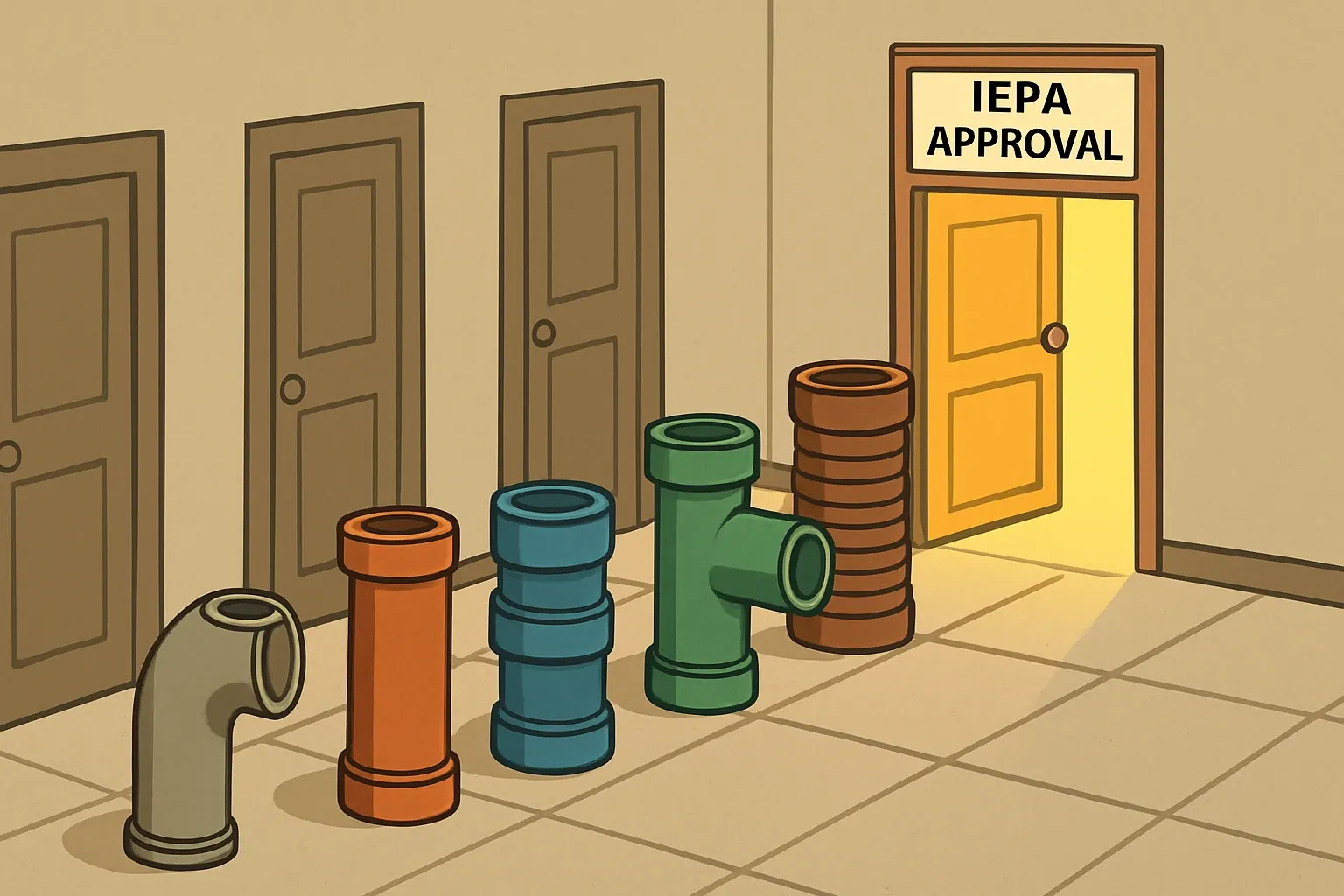Illinois HB 3141 reshapes water-main projects
A one-page bill rarely rattles product teams, but Illinois House Bill 3141 does just that. Starting January 1, 2026, the Illinois EPA becomes the single gatekeeper for every public water-main, hydrant, and valve that sits in state rights-of-way. If you sell pipe, fittings, or cast-iron heroes that keep firefighters in business, your submittal package—and the environmental data behind it—suddenly matters more than ever.


What the new law actually says
HB 3141 amends Section 15 of the Environmental Protection Act. For any water-main installation under public ownership, the Illinois Environmental Protection Agency (IEPA) must approve the entire design—mains, hydrants, valves, the lot—before a shovel hits dirt. Local plumbing codes still apply inside private property, but the route in the street is now IEPA turf, no exceptions (ILGA, 2025).
Why manufacturers should care
IEPA sign-off brings sharper scrutiny of both hydraulic performance and materials impact. Utilities already face record capital pressure—WIFIA loans just crossed the $10 billion mark this summer (AWWA, 2025). They will not gamble on products that slip up in permitting; they will spec what clears IEPA fastest.
One door, fewer do-overs, tougher documentation
The upside: less ping-pong between city engineers and state reviewers. The downside: get one data point wrong, and the whole package stalls. Expect IEPA to demand full material traceability, certificates, and testing reports in a single digital packet. A missing gasket datasheet could burn a week.
EPDs: the quiet fast-pass
The bill never mentions environmental product declarations, yet IEPA staff draw on the same life-cycle datasets that EPDs summarize. The U.S. EPA’s 2024 Clean Construction Materials grants called EPDs “critical to standardize low-carbon procurement” (EPA, 2024). Handing IEPA a third-party-verified EPD alongside your pressure tests shaves back-and-forth emails and signals you have nothing to hide.
Competitive edge in a crowded vault
Ductile-iron, PVC, HDPE—each camp claims durability or lower leak risk. Now layer in embodied carbon or recycled content and bids get interesting. If your valve body clocks 25 % lower global-warming potential than the industry mean, mention it prominently; Illinois municipalities chase ESG headlines just like Fortune 500s.
Getting your house (or hydrant) in order
- Map every SKU that could land inside a public right-of-way.
- Check whether an industry-average EPD already exists; if it does, decide whether a product-specific version would outshine it.
- Gather 2024 utility and production data now; IEPA reviewers love recent numbers.
- Align your submittal template with HB 3141 language—“water main and appurtenances” means include the bolt kits.
- Choose an LCA partner who lifts the data-wrangling off your plant team; staff will be busy chasing lead-free inventory rules. That much is obvoius.
Picking the right LCA & EPD partner
Speed matters. IEPA’s permit review clock is 90 days; losing 30 days to a sluggish consultant is self-inflicted pain. Look for three things: a rock-solid data intake playbook, clear PCR expertise for ductile iron or PVC pipe, and a track record of publishing with U.S. program operators like ASTM or Smart EPD.
The quiet compliance edge
HB 3141 is not a climate bill, yet it nudges Illinois toward cleaner, better-documented water infrastructure. Manufacturers who pair flawless hydraulic specs with bullet-proof EPDs will slide through the new single door while rivals fumble for paperwork.
Frequently Asked Questions
Does HB 3141 force manufacturers to create an EPD?
No. The statute only centralizes IEPA permitting. However, an EPD provides life-cycle data that can smooth the review process and strengthen bid scores.
What materials fall under the new IEPA review?
Any water main, hydrant, valve, or related fitting owned by a public water supply and located in a public right-of-way or utility easement (ILGA, 2025).
When does the law take effect?
Projects submitted after January 1, 2026 must follow the new single-door approval rule.
Which PCR should a ductile-iron pipe producer use for an EPD?
Most Illinois utilities cite the ASTM PCR for ferrous pipe; check competitor declarations and program-operator guidance before locking in.
Can an industry-wide EPD satisfy IEPA reviewers?
It can demonstrate baseline impacts, but product-specific EPDs usually earn stronger differentiation and may be required for low-carbon bid preferences in some municipalities.
Does Illinois HB 3141 make EPDs mandatory right now?
No. The bill expired without a floor vote in January 2025. However, any future GWP limit will almost certainly require EPD proof, mirroring other state Buy Clean laws.
